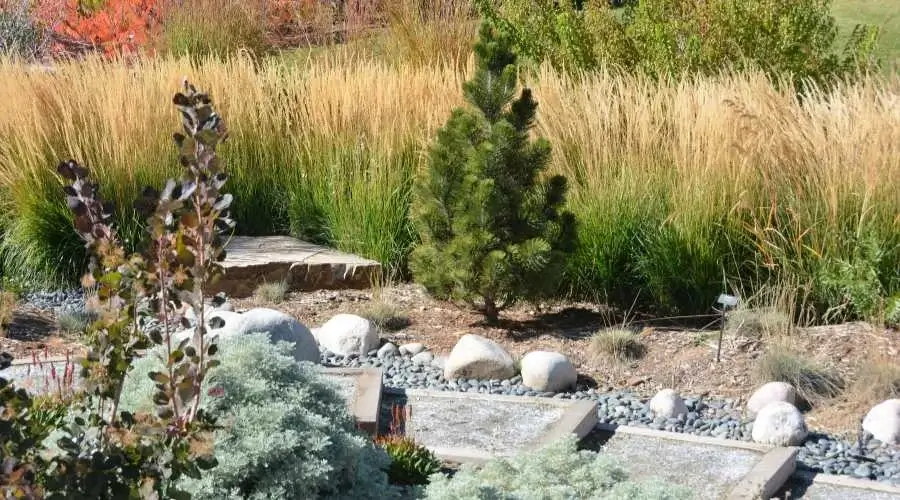Creating a beautiful and sustainable landscape doesn’t have to mean excessive water usage. At BJC Clifton Plumbers, we understand the importance of water conservation and offer innovative solutions for homeowners. In this article, we will explore the concept of xeriscaping—a water-smart landscaping approach that can enhance the beauty of your outdoor space while conserving water. With our expertise and services, you can transform your landscape into an eco-friendly oasis.
BJC Clifton Plumbers is committed to providing reliable plumbing services to residents in Clifton and the surrounding areas. Our team of experts is knowledgeable in various aspects of home improvement, including water-saving techniques for landscaping.
What is Xeriscaping?
Xeriscaping is a landscaping technique that focuses on reducing water usage and maximizing water efficiency. It involves designing and maintaining a landscape that requires minimal irrigation and is well adapted to the local climate conditions. The term “xeriscape” originates from the Greek word “xeros,” meaning “dry,” and emphasizes the need for water-wise landscaping practices.
By implementing xeriscaping principles, homeowners can create visually appealing landscapes while significantly reducing water consumption and the associated costs. Xeriscaping is particularly beneficial in regions prone to drought or where water resources are limited.
Benefits of Xeriscaping
The adoption of xeriscaping techniques offers several notable benefits:
1. Water Conservation
One of the primary advantages of xeriscaping is its emphasis on water conservation. By utilizing drought-tolerant plants, efficient irrigation methods, and reducing turf areas, xeriscaping significantly reduces water usage in the landscape.
2. Cost Savings
With xeriscaping, homeowners can experience substantial cost savings on their water bills. By using less water for irrigation, expenses associated with watering a traditional landscape can be significantly reduced.
3. Low Maintenance
Xeriscaping requires less maintenance compared to traditional landscaping. Drought-tolerant plants are often hardy and can thrive with minimal care. Additionally, reducing the size of turf areas means less mowing and maintenance tasks.
4. Environmental Benefits
Xeriscaping has positive environmental impacts. By reducing water usage, it helps conserve water resources, which is especially important in areas facing water scarcity. Furthermore, xeriscaping minimizes the need for chemical fertilizers and pesticides, promoting a healthier ecosystem.
Xeriscaping Techniques
To implement xeriscaping in your landscape, consider the following techniques:
1. Planning and Design
Start by assessing your landscape and understanding its unique characteristics, including soil type, sun exposure, and existing plants. Design your xeriscape by grouping plants with similar water needs together and creating efficient irrigation zones.
2. Soil Improvement
Amending the soil with organic matter can improve its water-holding capacity and drainage, promoting healthier plant growth. Well-drained soil allows water to reach plant roots effectively while preventing waterlogging.
3. Efficient Irrigation
Install drip irrigation systems or use soaker hoses to deliver water directly to the plant roots, minimizing water loss through evaporation. Additionally, utilize smart irrigation controllers that adjust watering schedules based on weather conditions and plant needs.
4. Mulching
Apply a layer of organic mulch around plants to conserve moisture, suppress weed growth, and regulate soil temperature. Mulch acts as a protective barrier, reducing water evaporation from the soil surface.
Water-Saving Plants for Xeriscaping
Choosing the right plants is crucial for a successful xeriscape. Opt for native or drought-tolerant plant species that are well adapted to your local climate. These plants require less water and maintenance while providing beauty and interest to your landscape. Here are some popular water-saving plants for xeriscaping:
- Succulents: Succulents, such as agaves and sedums, have thick, fleshy leaves that store water, making them highly drought-tolerant.
- Ornamental Grasses: Ornamental grasses, like feather grass and fountain grass, are resilient and require minimal water once established.
- Mediterranean Plants: Plants native to Mediterranean regions, such as lavender and rosemary, are well suited for xeriscaping due to their water-efficient nature.
- Native Wildflowers: Native wildflowers add color and attract pollinators while being adapted to the local climate conditions and requiring less water.
Consult with BJC Clifton Plumbers for expert advice on selecting water-saving plants that thrive in your area.
Additional Water-Saving Tips for Your Landscape
In addition to xeriscaping techniques and plant selection, consider the following tips to further enhance water efficiency in your landscape:
- Collect and utilize rainwater for irrigation purposes.
- Group plants with similar water needs together to optimize irrigation efficiency.
- Regularly monitor your landscape for leaks and repair them promptly.
- Adjust your irrigation schedule according to the changing seasons and weather conditions.
- Apply water-efficient practices such as deep watering and avoiding runoff.
- By incorporating these practices, you can maximize water savings in your landscape while maintaining its beauty and functionality.
Xeriscaping offers a sustainable and visually appealing solution for homeowners looking to conserve water and create an eco-friendly landscape. BJC Clifton Plumbers encourages the adoption of xeriscaping techniques to optimize water usage in your outdoor space. Contact our team of experts to learn more about xeriscaping and how we can assist you in transforming your landscape into a water-smart haven.




